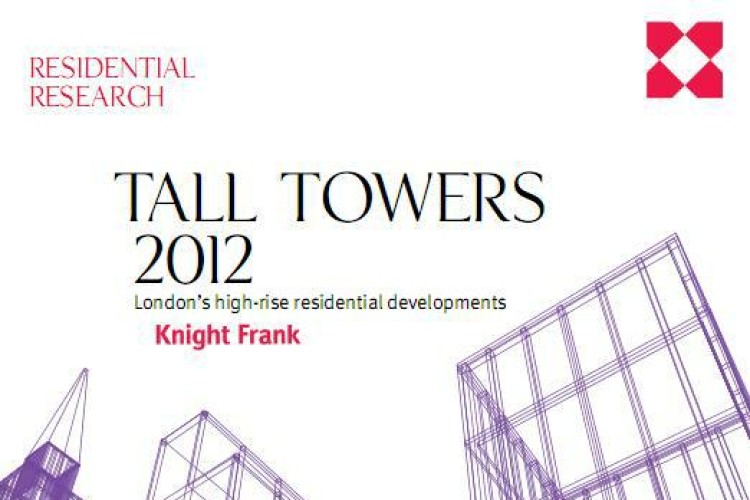The report, released today by Knight Frank, EC Harris and Barton Willmore, examines the planning, construction and funding challenges inherent in building tower schemes, including the additional costs of building ‘up’. But it also reveals that there can be a clear cost versus value benefit of building higher in certain locations acrossLondon’s largely low-rise skyline.
The report finds that the typical uplift in price per square foot in a residential tower in London is 1.5% per floor, excluding penthouse apartments. Once penthouses are included, the average increase rises to 2.2%.
The incremental increase in the cost of building ‘up’ is greatest in the 25-40 storey band.
There are currently 25 schemes under construction in London that include one or more residential or mixed-use towers and a further 78 such schemes have planning permission.
Funding remains a key issue, with high levels of pre-sales demanded in many cases. And despite widespread political acceptance of the benefits of tall towers, planning permission can be difficult to obtain.

A map of all recently completed schemes, as well as schemes including residential and mixed-use towers that are under construction or in planning or pre-planning stages across London, shows that towers are now a key feature of the city’s planning pipeline.
The report also highlights the factors that drive demand for tower schemes in London, before looking to the future, outlining how new sustainability rules could change the look of towers.
Stephan Miles-Brown, head of Knight Frank Residential Development, said: “This is London’s decade of towers: with residential land values up 20.3% in the last twelve months and a population boom, a need for the most effective use of space is evident. However, only 30% of the schemes including towers with planning permission are under way – partially a symptom of the challenging funding climate. The well-designed, centrally-located towers we will see succeed in the next few years will have a definite cachet – the clear premium for living at the top is a key driver in the development of a tower.”
Paul Cohen, partner at EC Harris said: “We are continuing to see a complex inter-relationship between land values, construction costs and sales values on many high rise schemes. The need for properly thought out sensitivity testing of varying heights, building shapes and efficiencies is key to project optimisation.”
Chris Brett, partner at Barton Willmore said: “In a thriving city such as London, tall towers work and are recognised as having an important role to play. They allow many thousands more people to live and work in the central zone and near major transport hubs and have tremendous power to regenerate the area around them. “We are seeing the emergence of more and more tall buildings away from the central commercial district. New developments in the likes of Lewisham, Chelsea and Hackney underline both the political support and market demand for tall buildings.”
Got a story? Email news@theconstructionindex.co.uk



